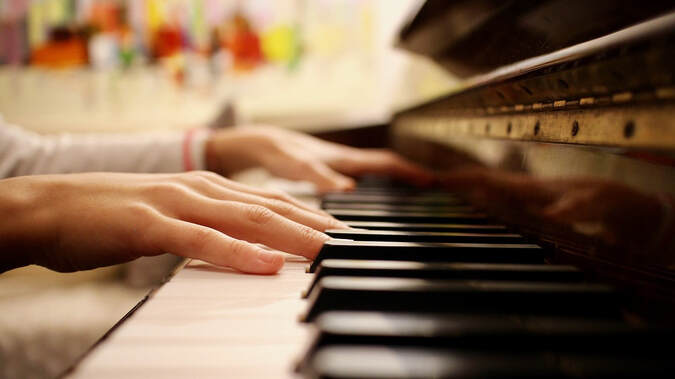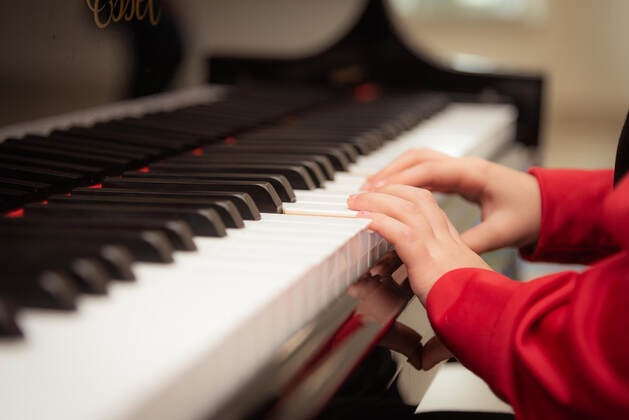|
When children listen to, study, and perform music with a strong sense of rhythmic motion, the exercise brings together a number of important brain activities. Savvy music educators have a number of tips and tricks for teaching rhythm and beat, with a few of them discussed below: 1. You’ve got rhythm, or is that the beat? Part of learning to develop rhythm is knowing the difference between the rhythm and beat. It’s not only kids who can become confused between the meaning of the two. Here is a simple explanation. The beat of a piece of music is the regular pulse you can feel underneath its tune. One good analogy: Think of the beat like the ticking of your watch. One way to find the beat is to pay attention to how you find yourself snapping your fingers or tapping your foot along with a composition. That’s the beat. The underlying beat stays the same, regardless of the length of the individual notes in the composition. On the other hand, the rhythm is contained within the time value of the notes themselves. Many music teachers who work with young children teach them that the rhythm is “how the words go.” Rhythm can be fast or slow, and it can change or alternate its pace. But the underlying beat is unchanging. 2. Start simple.Traditional nursery rhymes are an excellent way of teaching the difference between rhythm and beat. One way to do this is to teach children a simple rhyme, like “Baa baa, black sheep, have you any wool?” You can begin by reciting the rhyme aloud in an engaging way, making the beats obvious as you sing by tapping your foot or striking your knee. A few choruses of chanting the rhyme with you should help to make children confident about the words and the beat. Once children are very sure of the way it goes, you can ask them to help you “catch” the words of the rhyme as they speak them. As you clap to each individual syllable in the rhyme, they will begin to hear themselves clapping out the rhythm of the piece. Some students may want to dance along to the rhythm, instead of only clapping. Whatever movements they want to make can be helpful in improving their understanding. You can also take advantage of the fact that many music educators have posted free, downloadable resources online. They include worksheets for mapping out the difference between beat and rhythm. 3. Reinforce the idea of beat and rhythm with movement.Another simple activity that can help students to grasp the concepts of “beat” and “rhythm” on a neurological level involves simply asking them to turn their heads to look first in one direction and then in the opposite direction, as they clap to the beat and the underlying the rhythm. 4. Help instrumentalists learn about rhythm.Children who are learning to play an instrument have an additional challenge in front of them in that they will need to translate how their bodies respond to rhythm into the musical notations on a page. Often, students confuse rhythm and beat when trying to interpret a piece of music. A helpful strategy in this case can begin with having the students place their fingers against their throats and feel their pulse. When they have become acclimated to this steady, basic beat, you can ask them to begin counting notes in two’s and three’s along with the beat. You can then introduce an activity in which they clap along while you play a tune on the piano in a fashion similar to the aforementioned nursery rhyme activity. 5. Learn to measure music with words. Some experts note that beginning music students often experience difficulty in grasping the concept of half notes. While the time-tested method of counting beats across a measure of music involves numbers, teachers often find that substituting words or sounds for counting the beat can put the rhythm into better focus for students. It may also be helpful to distinguish different types of notes with words denoting how fast or slow the tempo is. For example, quarter notes can be said to “walk,” while eighth notes “run.” Using rhythm syllables is another effective way of teaching the concept of note duration. In a method that is analogous to using the solfege syllables (Do, Re, Mi, Fa, So, La, Ti, Do) to teach pitch, a set of rhythm syllables provides students with short, made-up words that represent tangible “hooks” on which to hang the values of individual notes. The typical way of teaching rhythm in American schools is to begin with these rhythm syllables. Once students have mastered them, they can move on to the substitution of numbers to signify notes’ value. 6. The Kodály Method brings it all together.The methods of renowned mid-20th century Hungarian composer, musicologist, and educator Zoltán Kodály remain popular with music teachers the world over. Music teachers have taken his basic concepts of music instruction and developed them into a comprehensive method. This graded series of steps in learning musical concepts is applicable not only to young children, but also to beginning music students of any age.
Kodály believed in teaching music through what he called “direct intuition.” The first concept in the Kodály system of teaching music to young children involves getting them to understand the concept of beat at an innate, physical level, as well as understanding the difference between the beat and the rhythm. To teach rhythm, the Kodály system uses the syllables “ta” and “ti-ti” as its base. These syllables designate, respectively, quarter notes and eighth notes. Teachers using the Kodály Method often play guessing games by clapping the rhythm of a popular song’s opening notes and challenging students to “name that tune.” Comments are closed.
|
Photo used under Creative Commons from Marina K Caprara


 RSS Feed
RSS Feed
